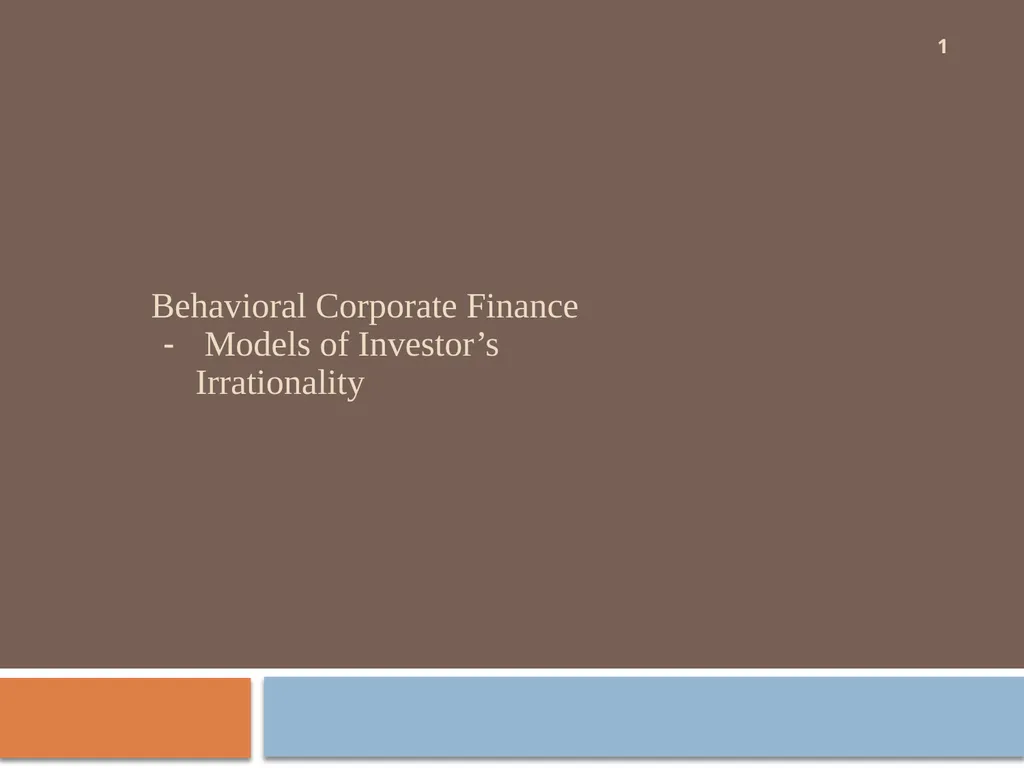
Behavioral Corporate Finance - Models of
Author: aaron | Published: 2025-06-27
Description: Behavioral Corporate Finance Models of Investors Irrationality 1 Outline Introduction DeAngelo et al. (2010) SEO proceeds, issuer characteristics, and estimated issuance probability Logit analysis The need for external finance Polk and
Download Presentation
Download the PPT/PDF: Download
Transcript:
Loading transcript�